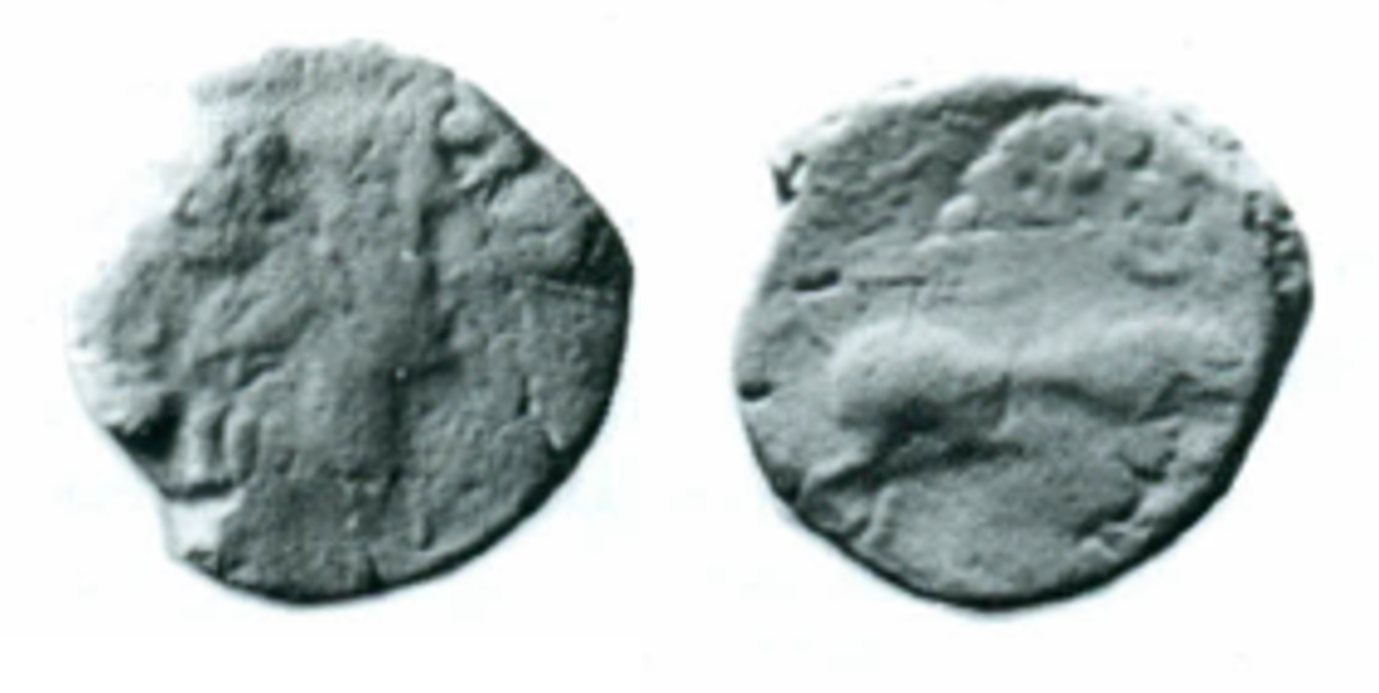Emporiae (AE head/bull) over Saitabi (head/horseman) (Ripollès 1995, n°7)
From SILVER
195 BCE - 170 BCE
Images
Overstruck variety

Saitabi_.jpg [1]
Location/history
| Museum collectionMuseum collection: | GNC, n°14.362. | |
Overstriking coin
Description
| ObverseInscription or printing placed on the obverse.: | Bare head to right, behind amphora. | ReverseInscription or printing placed on the reverse.: | Bull charging right. Illegible legend. |
Mint and issuing power
| MintIdentifies the place of manufacture or issue of a numismatic object.: | Emporiae | Ancient regionAncient region. | Hispania Citerior | Modern countryModern country: Spain | AuthorityIdentifies the issuing power. The authority can be "pretended" when the name or the portrait of X is on the coin but he/she was not the issuing power. It can also be "uncertain" when there is no mention of X on the coin but he/she was the issuing power according to the historical sources: |
Chronology
| FromIdentifies the initial date in a range assigned in a numismatic context. 195 BCE toIdentifies the final date in a range assigned in a numismatic context.. 170 BCE | Hellenistic 323-30 BC |
Physical description
| MetalThe physical material (usually metal) from which an object is made.: Bronze |
WeightWeight of the numismatic object (in grams). in grams: 6.216.21 g <br />6,210 mg <br /> | DenominationTerm indicating the value of a numismatic object. Examples: tetradrachm, chalkous, denarius.: semis |
AxisDescribes the directional relationship between the obverse and reverse of a numismatic object.: 77 mm <br />0.7 cm <br /> |
References
| Coin referenceReference of the Coin: | Ripollès 1995, p.296, n°7. | Coin series referenceReference to coin series study: | Vives 19261Vives 1926, 15-5, Villaronga 19942Villaronga 1994, p.146, n°33, Ripollès 19953Ripollès 1995, p.296, n°7. |
| Coin series web referenceCoin series web references: | |||
Overstruck type
Description
| ObverseInscription or printing placed on the obverse.: | Male head, diademed, with mantle and ring fibula, to the right. Behind palm leaf. | ReverseInscription or printing placed on the reverse.: | Horseman to right. |
Mint and issuing power
| MintIdentifies the place of manufacture or issue of a numismatic object. ᵖ: | Saetabis | Ancient regionAncient region. ᵖ | Hispania Citerior | Modern countryModern country: Spain | AuthorityIdentifies the authority in whose name (explicitly or implicitly) a numismatic object was issued. ᵖ: |
Chronology
| FromIdentifies the initial date in a range assigned in a numismatic context. 160 BCE toIdentifies the final date in a range assigned in a numismatic context.. 120 BCE | Hellenistic 323-30 BC |
Physical description
| DenominationTerm indicating the value of a numismatic object. Examples: tetradrachm, chalkous, denarius. ᵖ: | as |
References
| Coin type referenceReference to coin series study ᵖ: | Vives 19261Vives 1926, n°20-2, Villaronga 19942Villaronga 1994, p.315, n°3. | ||
| Coin series web reference overstruckCoin series web references overstruck: | |||
Additional data
| Frequency of overstrikesFrequency of overstrikes: | Level of confidenceLevel of confidence of the identification: | ||
| RemarksRemarks: | Ripollès 1995 : Image n°6 corresponds to description n°7. | ||
